Do you feel frustrated, angry, anxious, stressed, and depressed? Then it’s time you tried out art therapy. Artistic activities like drawing or sculpting can have significant therapeutic and healing effects and help you work through difficult emotions. It helps you express your true feelings without having to speak a single word.
Your artistic repertoire could consist of drawing stick figures or ugly blobs that resemble pieces of turd and it wouldn’t make a difference. What matters are the emotional and psychological impacts of what you draw, paint, or create!
If you regularly struggle with a lack of focus, restlessness, irritability, stress, frustration, depression, anger, or any emotions that you have difficulty processing, you absolutely need to consider giving art therapy a serious try.
Like me, your art therapy practice could be as simple as having a cup full of pencils and a drawing pad next to where you work. Here is what mine looks like:
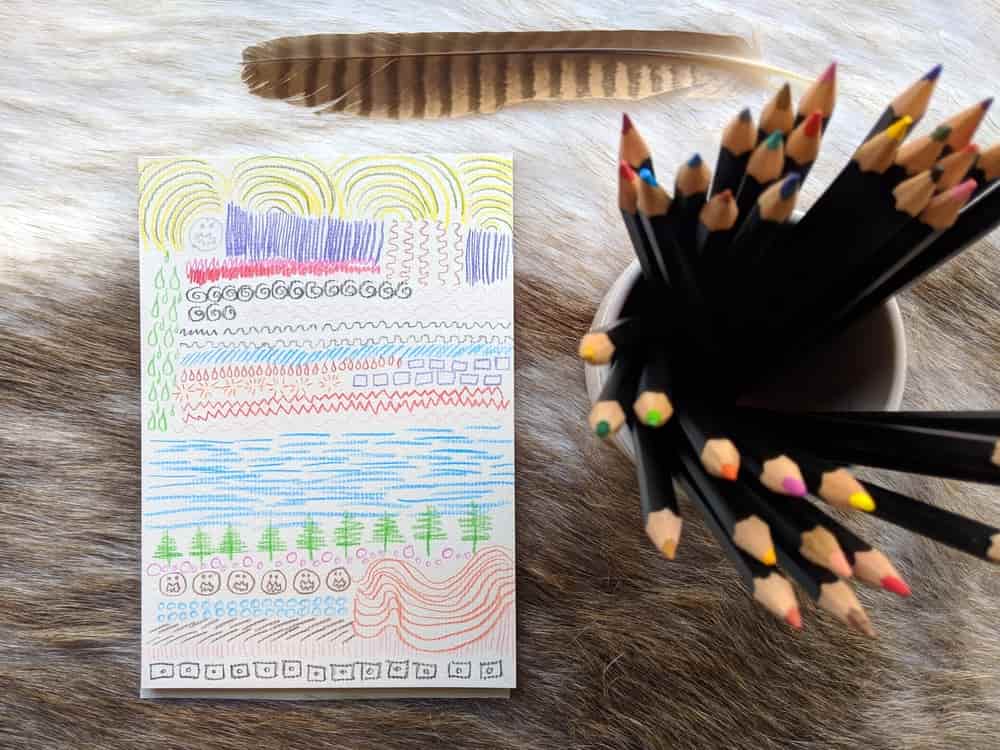
As you can see, there’s nothing fancy about what I’ve drawn. In fact, from your perspective, this page might look like a bunch of mental vomit that has landed on a perfectly nice piece of paper. In any case, its the benefits that count! And I can tell you that art therapy has had some tremendously positive effects on my ability to focus, process grief, express anger, and relax.
In this article, you’ll find a bunch of art therapy activities inspired by Russian art therapist and psychologist Victoria Nazarevich.
What Is Art Therapy?
Art therapy is the safe, creative, and therapeutic process of expressing your inner thoughts, feelings, memories, and experiences through any form of art. It usually involves techniques such as drawing, painting, sculpting, collaging, and other types of crafts that help create more inner self-awareness, understanding, and harmony.
Those who undergo such therapy with trained therapists are often taught to reflect on their art and examine any emotional or psychological truths that may be inherent in what they create.
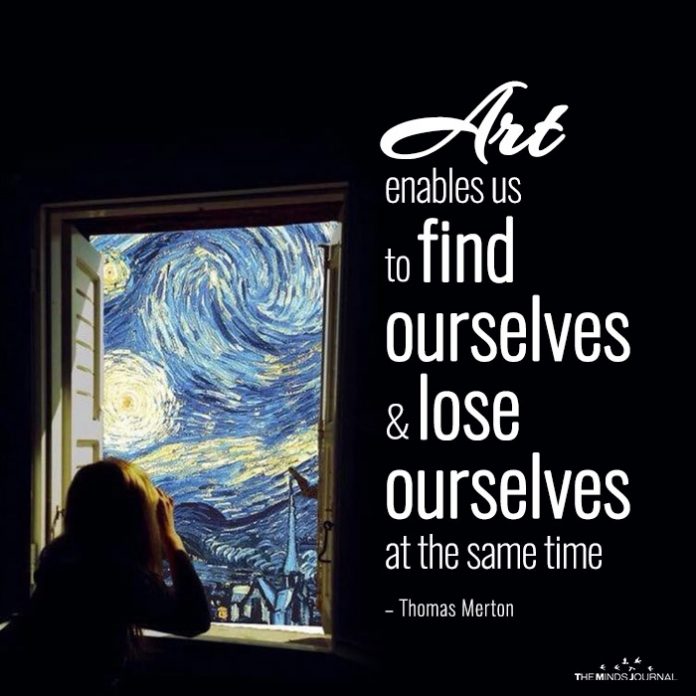
Art Therapy is For Children, Adults, the Elderly – Everyone!
No matter who you are, where you come from, how old you are or what you do, you can benefit from art therapy. There’s no doubt about it. So if you’re wondering “umm, is this really for me?” the answer is a resounding YES!
Children, for example, often benefit from such therapy because it helps them to process their emotions and learn the skill of self-soothing. Adults benefit from the positive mental health impacts and the elderly benefit from the self-expression and social aspects of doing art therapy with others.
Read 13 Characteristics Of A Mentally Healthy Person
11 Art Therapy Benefits
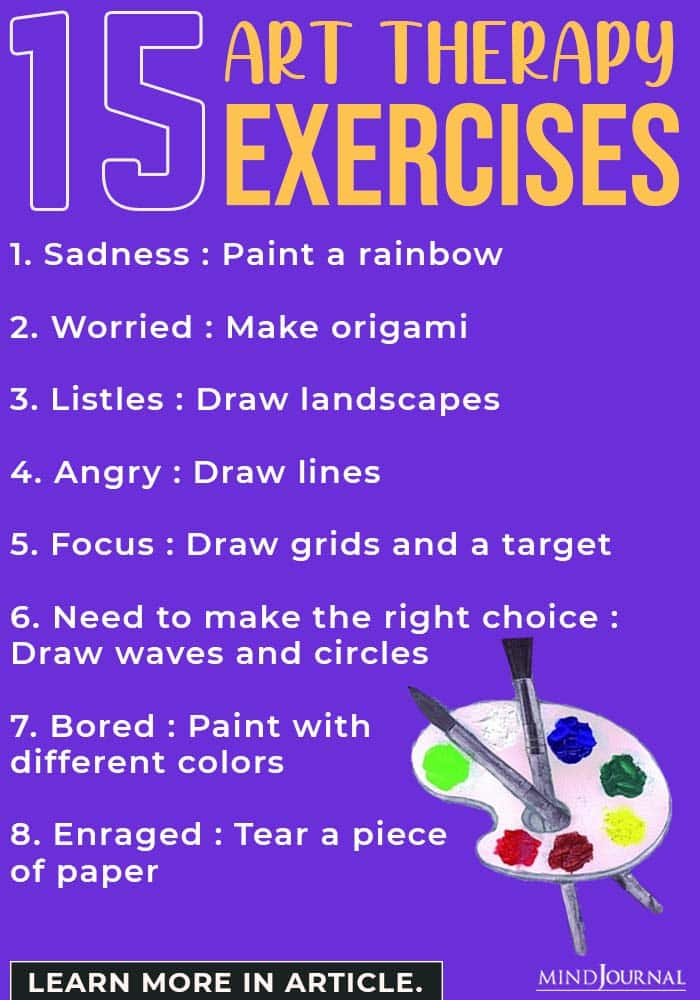
Seeking out an art therapist will help you learn to ‘decode’ the various metaphors, symbols, and non-verbal clues buried in your artwork that reveal hidden wounds, fears, and desires. BUT … not everyone has the means to seek out professional therapy.
Thankfully, there are many books out there such as 250 Brief, Creative, and Practical Art Therapy Techniques which can help you become your own amateur art therapist. You can even join free online groups (such as those found on various social media platforms like Facebook) dedicated to art therapy, post your artwork, and receive insight from legitimate art therapists if that appeals to you.
Whether done by yourself (or with an art therapist), here are some wonderful benefits you can expect to enjoy:
- Improved self-esteem and self-worth
- Increased ability to self-soothe
- Stress relief
- Improved emotional intelligence and processing
- Increased ability to cope with chronic physical illnesses
- Improved mental health
- Enhanced problem-solving skills
- Ability to face past traumas and emotional triggers
- Improved communication skills
- Increased focus
- Emotional and mental catharsis (healthy outlet of self-expression)
And all this simply by putting a pen to paper!
Read 21 Different Art Therapy Exercises For Different Emotions
15 Art Therapy Ideas And Activities To Overcome Stress And Anxiety
Now, let’s get to the core of this article, shall we? You will find some amazingly simple and effective art therapy ideas and activities below:
1. Sadness
Paint a rainbow:
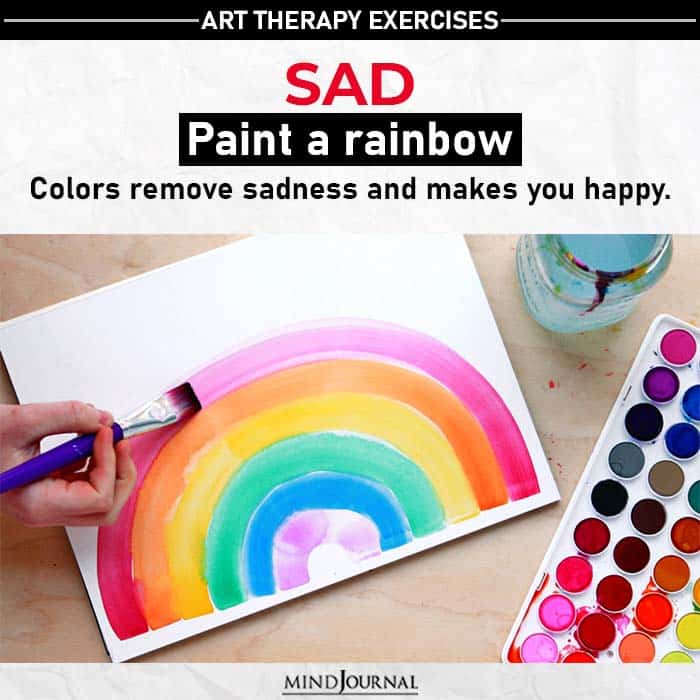
2. Worried
Make origami:
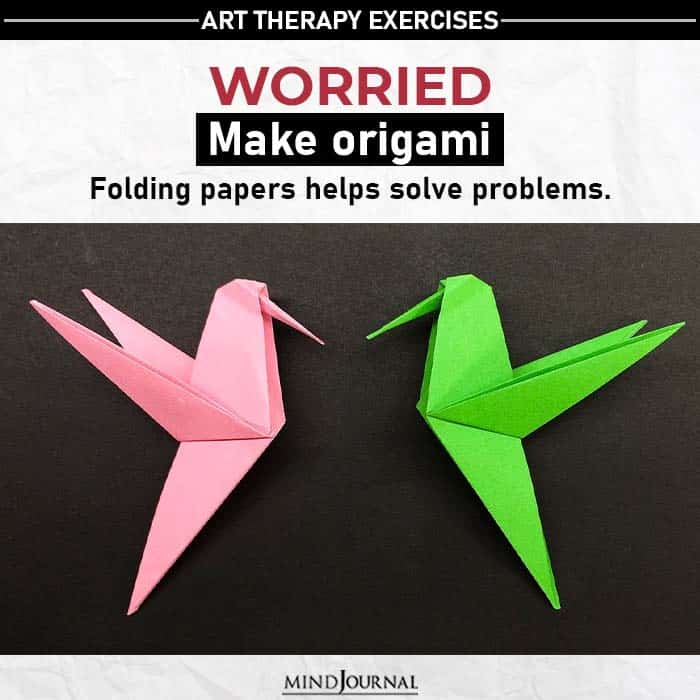
3. Listless
Draw landscapes:
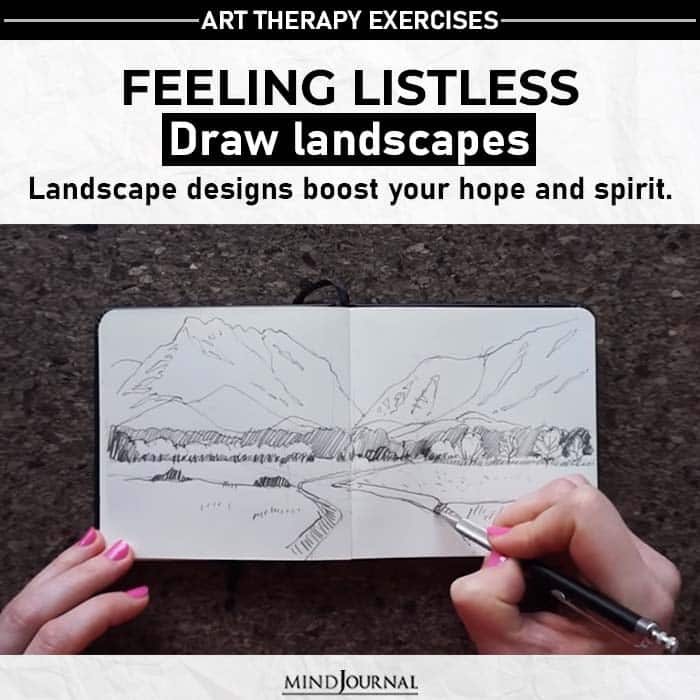
4. Angry
Draw lines:
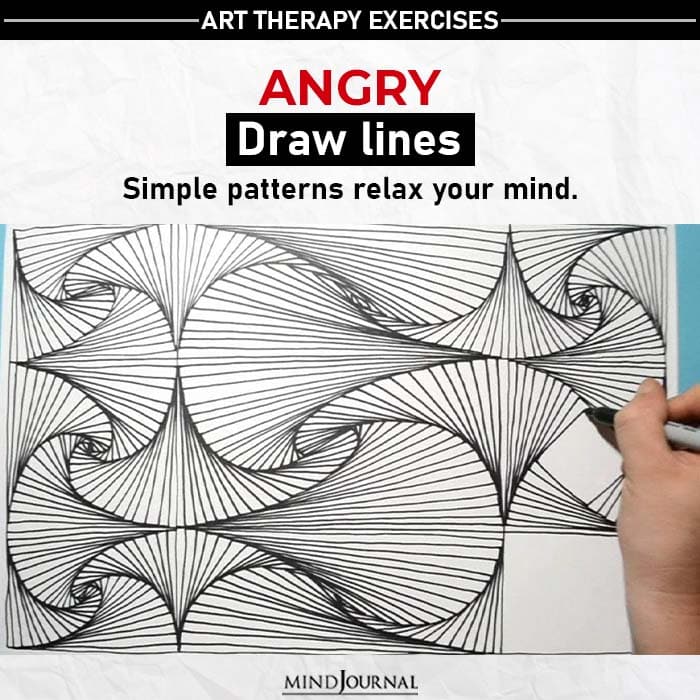
5. Focus
Draw grids and a target:
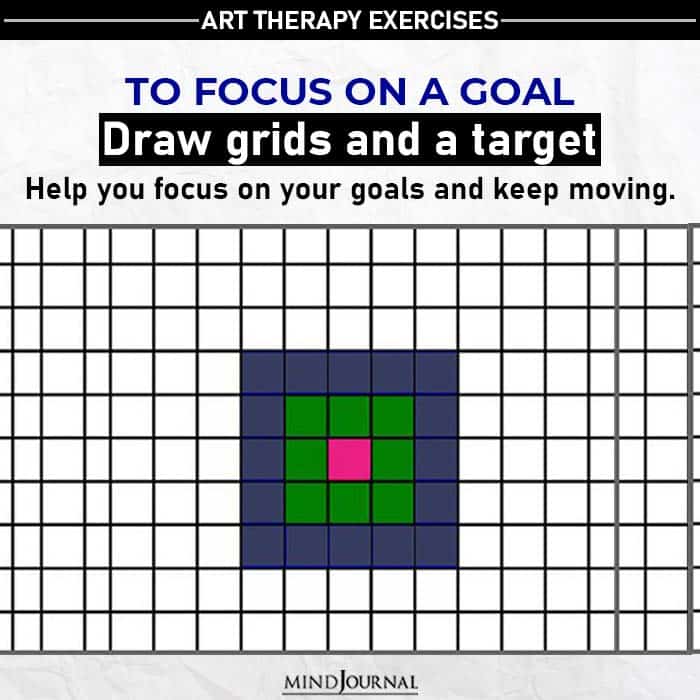
6. Need to make the right choice
Draw waves and circles:
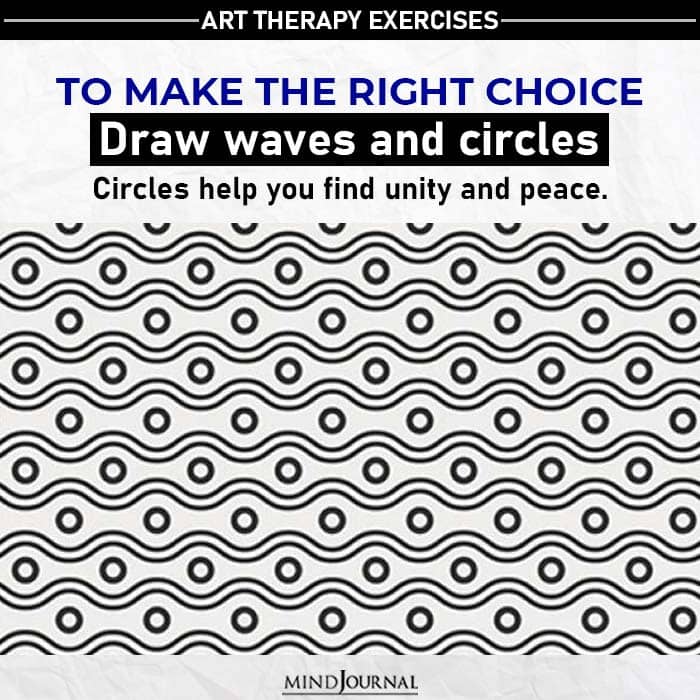
7. Bored
Paint with different colors:
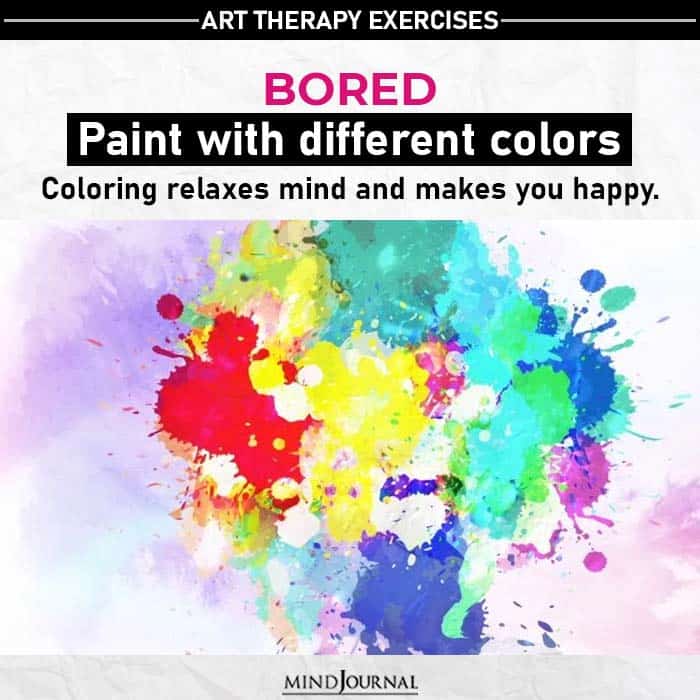
8. Enraged
Tear a piece of paper:
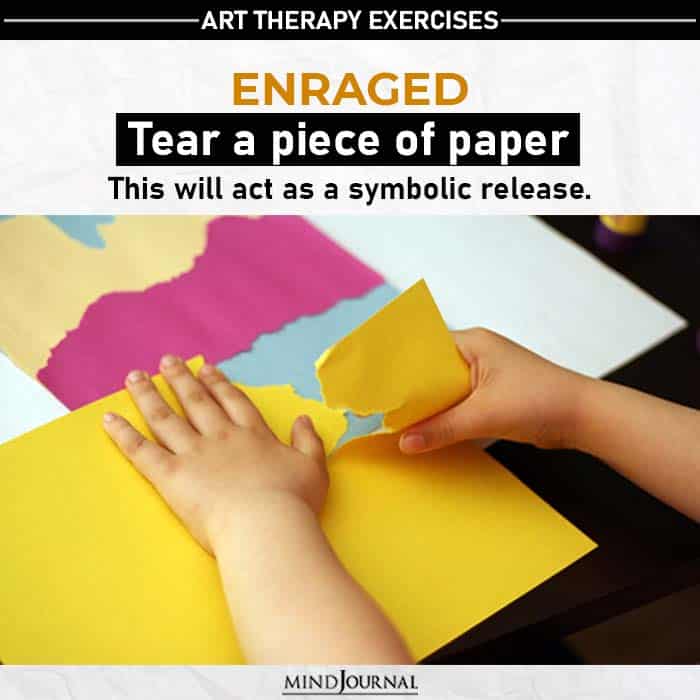
9. Nostalgic
Draw a maze:
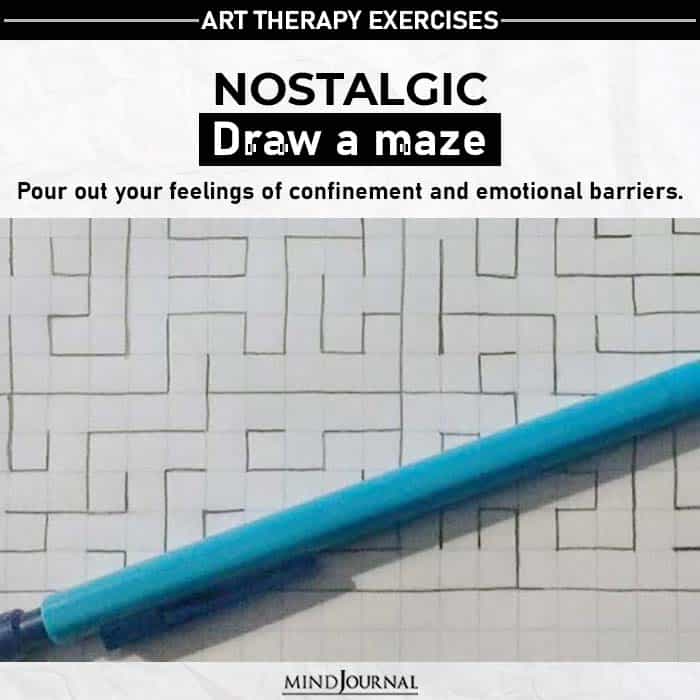
Related 7 Negative Mindsets That Undercut Your Mental Strength and Resilience
10. Difficulty understanding wishes
Make a collage:

11. Confused
Draw a mandala:
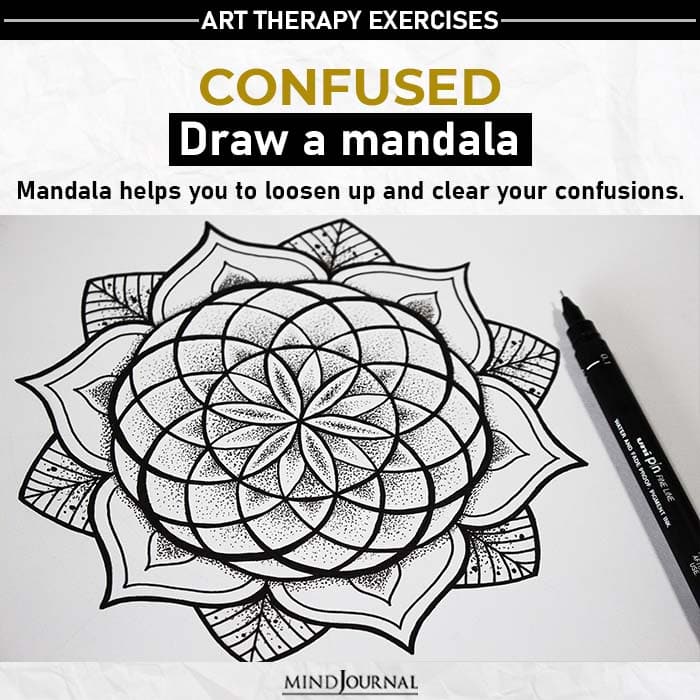
12. Stuck
Draw spirals:
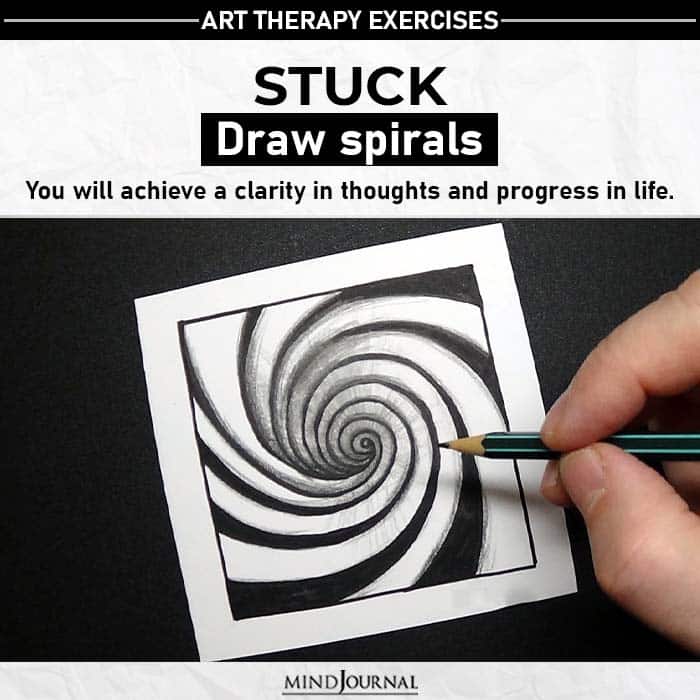
13. Difficulty understanding feelings
Draw yourself:
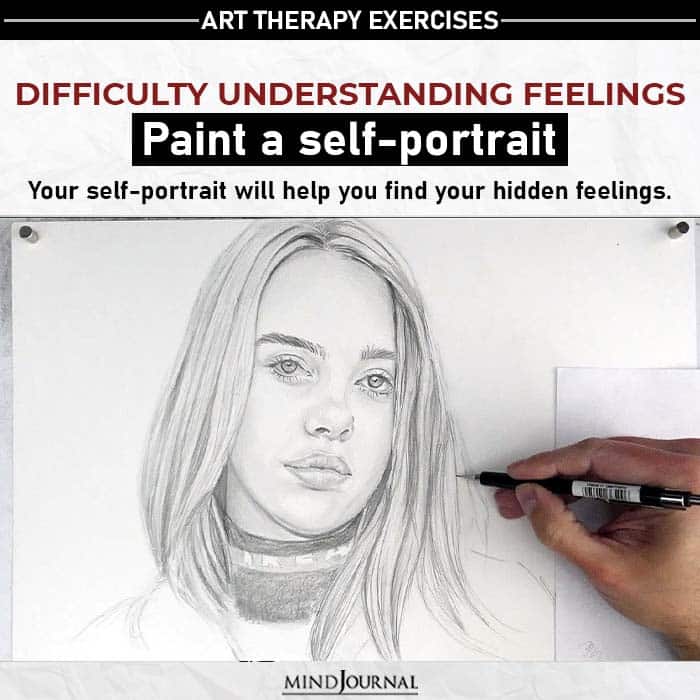
14. Desperation
Draw roads:
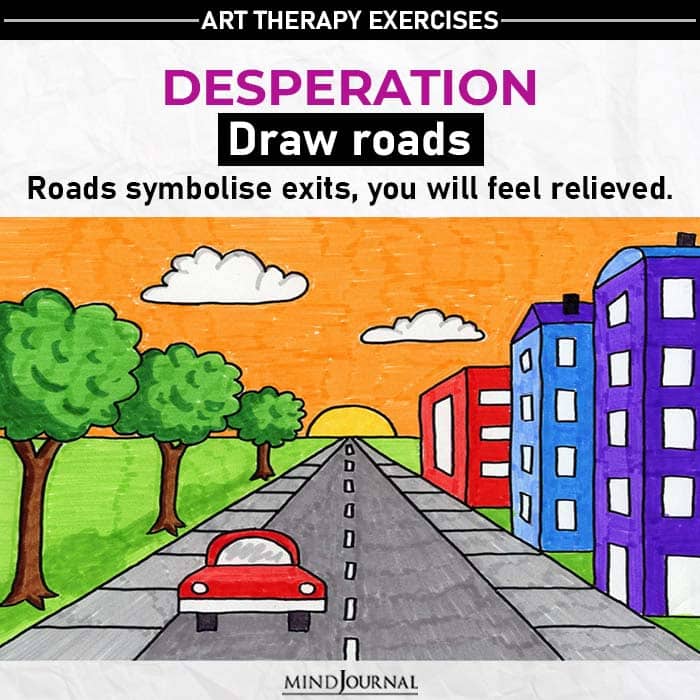
15. Need to arrange thoughts
Draw cells or squares:
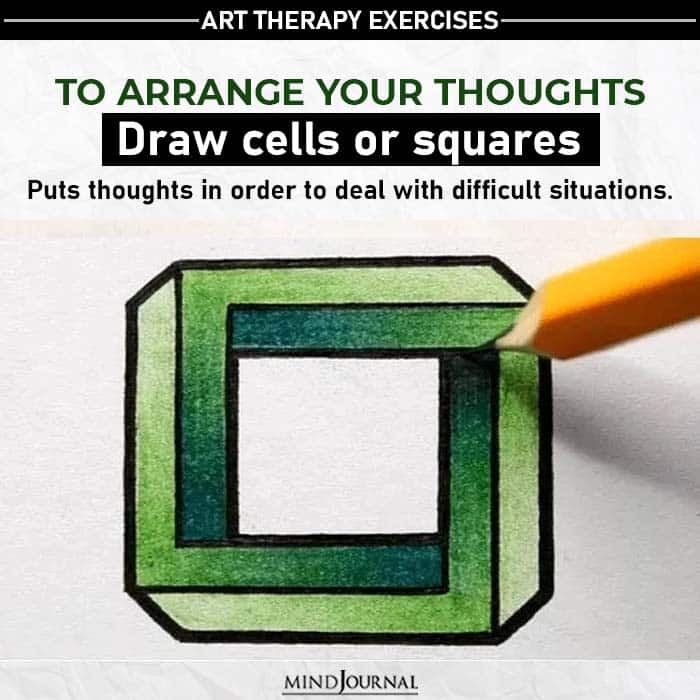
There are so many benefits of art therapy that it’s worth taking the time to dabble and experiment. The point isn’t to create a beautiful piece of art, the point of this therapy is to express your inner feelings, thoughts, and unconscious struggles.
Written by ALETHEIA LUNA Originally appeared in LONERWOLF Republished with permission
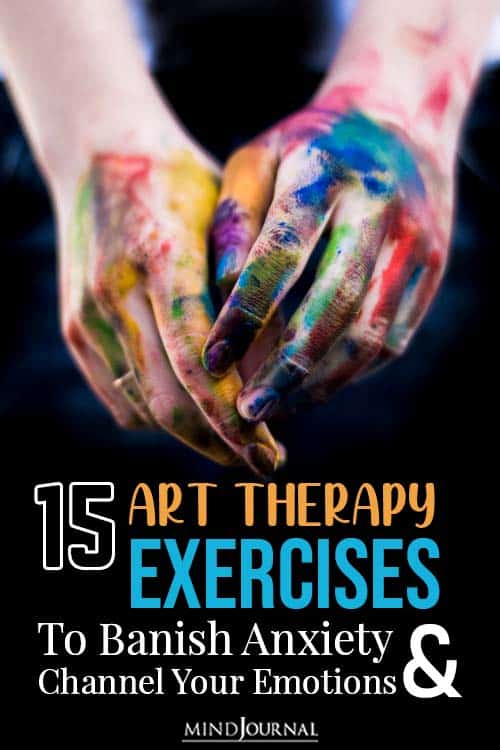

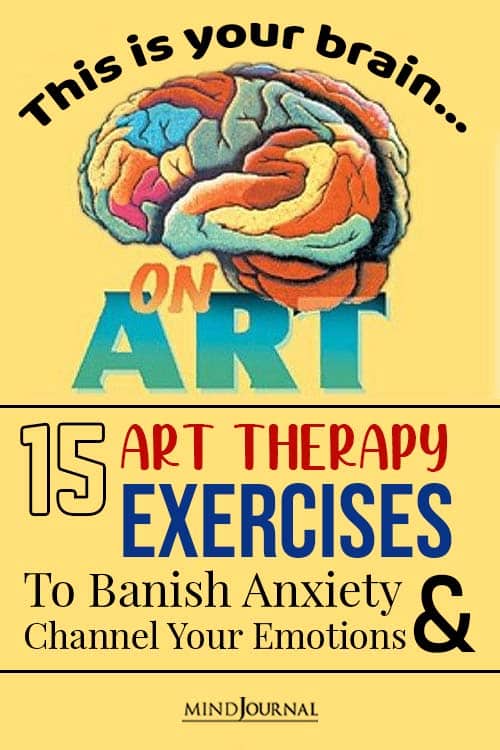









Leave a Reply